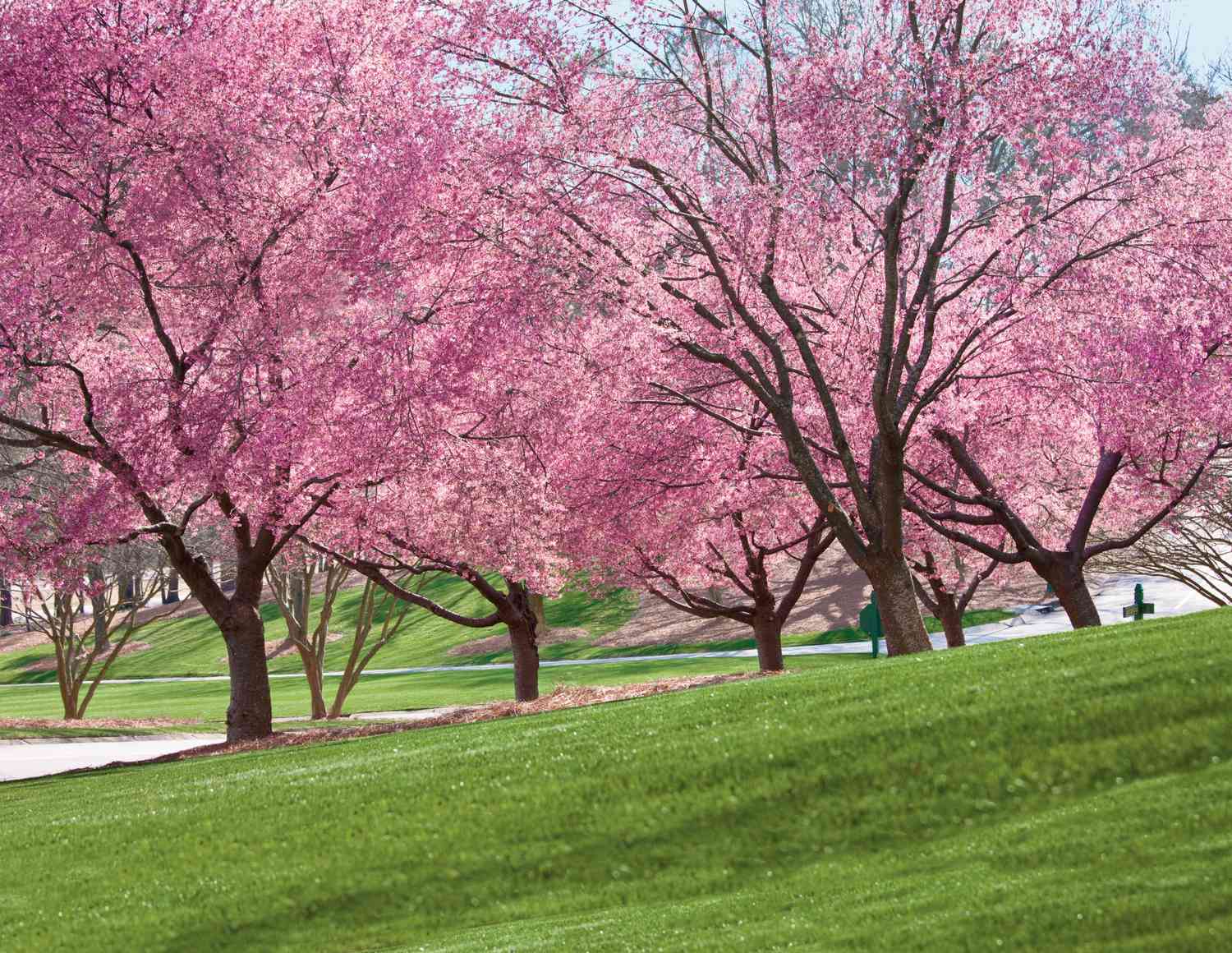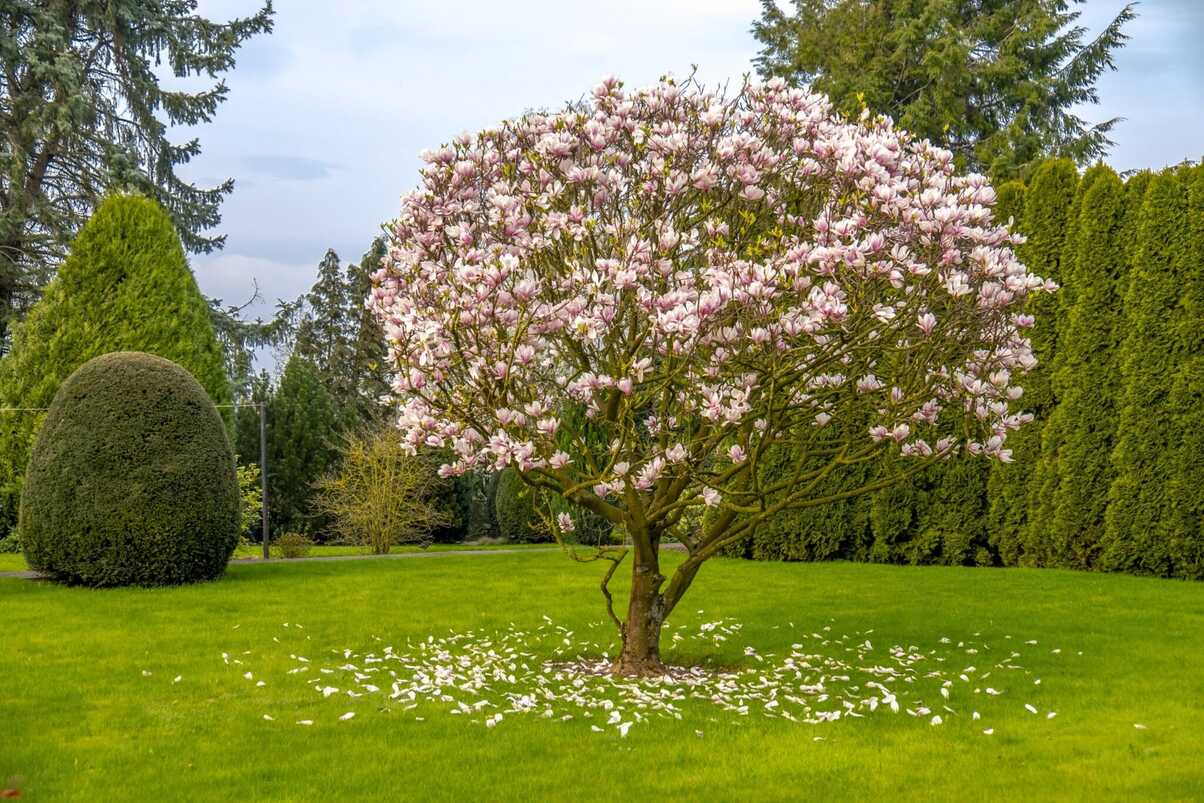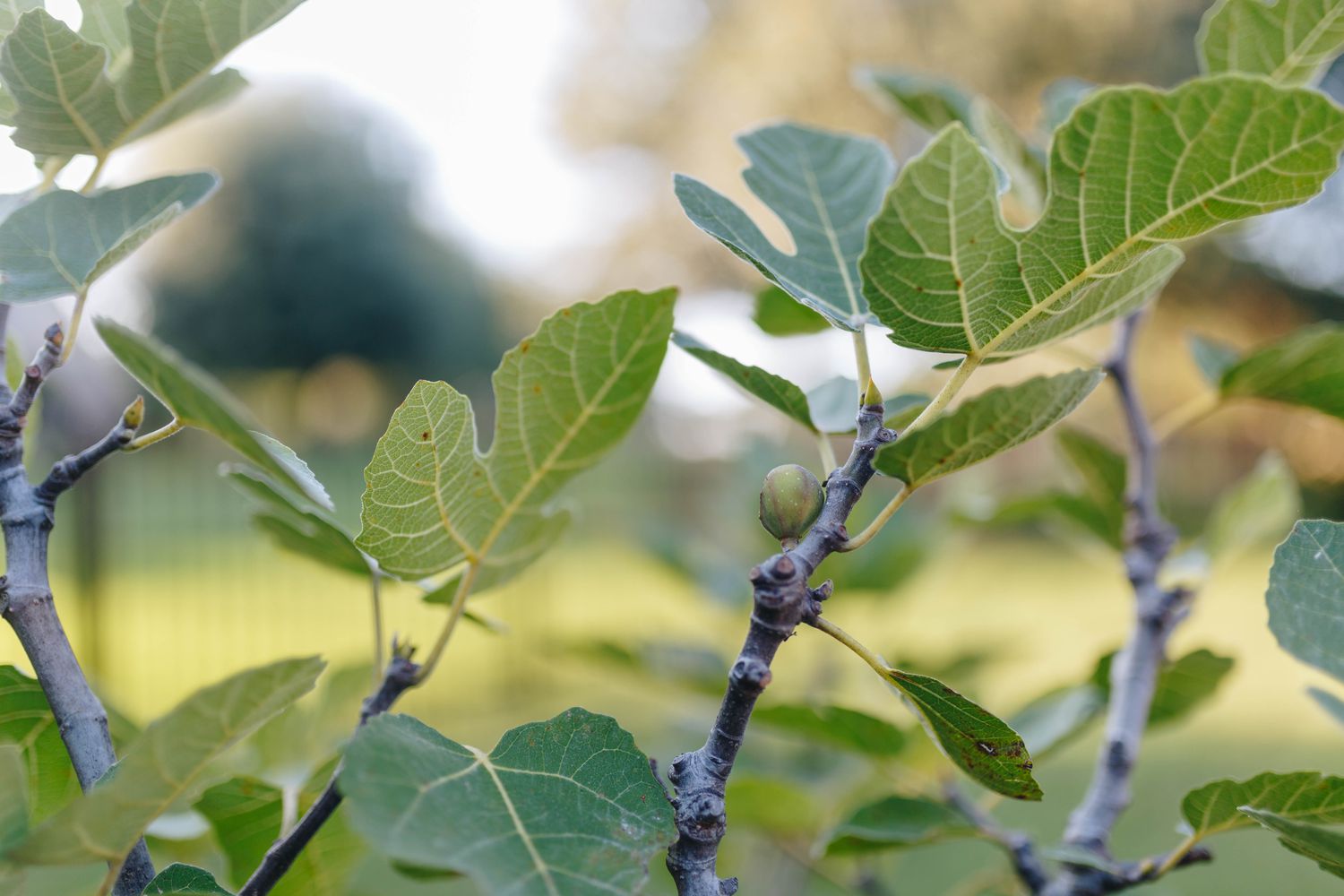Home>Gardening News and Trends>Latest News>How Tall Are Redwood Trees


Latest News
How Tall Are Redwood Trees
Modified: January 22, 2024
Discover the latest news about redwood trees and explore their magnificent height. Learn fascinating facts and marvel at their towering beauty.
(Many of the links in this article redirect to a specific reviewed product. Your purchase of these products through affiliate links helps to generate commission for Chicagolandgardening.com, at no extra cost. Learn more)
Table of Contents
Introduction
Welcome to the fascinating world of redwood trees, majestic giants that have captured the imagination of nature enthusiasts and tree lovers alike. These towering wonders are among some of the oldest and tallest trees on Earth, defying the test of time with their impressive stature.
Native to the coastal regions of California, United States, redwood trees belong to the taxonomic family Cupressaceae and are categorized into two primary species: the coast redwood (Sequoia sempervirens) and the giant sequoia (Sequoiadendron giganteum).
Redwood trees have a rich history dating back millions of years. They have witnessed the rise and fall of civilizations, survived natural disasters, and continue to thrive in their unique habitats. In this article, we will explore the history, characteristics, and the awe-inspiring heights of redwood trees, as well as the factors that contribute to their remarkable growth.
So, buckle up and get ready to embark on a journey through the enchanting world of redwood trees, where tall tales and magnificent feats await your discovery!
History of Redwood Trees
The history of redwood trees spans millions of years, dating back to a time when dinosaurs roamed the Earth. Fossil evidence suggests that ancestors of modern-day redwoods existed as far back as the Jurassic period, over 200 million years ago.
These ancient giants have witnessed dramatic shifts in Earth’s climate and have adapted to survive various geological events. During the ice age, when much of North America was covered in ice, redwood trees persisted in small pockets along the California coast, sheltered by the region’s unique microclimate.
Native American tribes, such as the Yurok, Karuk, and Tolowa, have revered and depended on redwood trees for centuries. They utilized the wood for building shelters, crafting tools, and even incorporating it into their spiritual practices. The significance of these trees in indigenous cultures continues to this day, with ongoing efforts to preserve their cultural heritage.
European explorers first encountered redwood trees in the late 18th century. In 1769, Spanish explorer Gaspar de Portolá documented the presence of these immense trees during his expedition in California. However, it wasn’t until the mid-19th century that the world truly became aware of the awe-inspiring grandeur of the redwoods.
The gold rush of 1848 brought a surge of settlers to California, and with them came a demand for lumber to fuel the rapidly expanding economy. Unfortunately, this led to widespread logging of the magnificent redwood forests. Massive trees were felled to meet the growing need for construction materials, resulting in significant deforestation.
Recognizing the importance of preserving these towering giants, conservation efforts were initiated in the early 20th century. Redwood National Park was established in 1968, encompassing a significant portion of the remaining old-growth forests. Additional parks and reserves were established over the years, working towards the conservation and protection of these iconic trees and their ecosystems.
Today, the history of redwood trees serves as a powerful reminder of the resilience and endurance of nature. These living relics continue to inspire awe and wonder, reminding us of the need to protect and cherish our natural world for future generations.
Characteristics of Redwood Trees
Redwood trees possess a unique set of characteristics that set them apart from other trees in the plant kingdom. From their massive size to their longevity, here are some defining features of these remarkable giants.
- Impressive Height: Redwood trees are renowned for their towering height, often reaching over 300 feet (90 meters) in their natural habitat. This makes them the tallest trees on Earth, surpassing even the mighty sequoias.
- Massive Trunks: Alongside their incredible height, redwoods also exhibit thick trunks, with diameters often exceeding 20 feet (6 meters). These trunks are straight, cylindrical, and remarkably resistant to damage from fire, insects, and fungal decay.
- Soft and Spongy Bark: The bark of redwood trees is unique, providing them with exceptional protection against wildfires. The bark is thick, fibrous, and contains high levels of tannin, which acts as a natural fire retardant.
- Needle-like Leaves: Redwoods have needle-like leaves that are arranged spirally around the branches. The leaves are lush green and can capture moisture from the air, making them well-suited to the foggy coastal environments they inhabit.
- Lifespan: Redwood trees are incredibly long-lived, with some individuals estimated to be over 2,000 years old. The combination of their resistance to diseases, pests, and fire, as well as their ability to regenerate, contributes to their remarkable longevity.
- Ecosystem Engineers: Redwood trees play a vital role in shaping their surrounding ecosystems. They create unique microclimates by capturing moisture from fog, which supports a diverse range of plant and animal species. Fallen redwood logs also create habitat for countless organisms, contributing to the overall biodiversity of the forest.
- Flexibility: The structurally flexible wood of redwood trees allows them to sway with strong winds and withstand earthquakes, making them incredibly resilient to natural forces.
These characteristics collectively showcase the extraordinary adaptability and resilience of redwood trees, allowing them to thrive in their coastal habitats and captivate the hearts and minds of people from around the world.
Average Height of Redwood Trees
The redwood trees, specifically the coast redwoods (Sequoia sempervirens), are renowned for their exceptional height. On average, these majestic giants reach heights between 200 and 300 feet (60 to 90 meters). However, it is important to note that individual tree heights can vary significantly.
One famous example of an exceptionally tall redwood tree is the Hyperion tree, which stands at an astonishing height of 379.7 feet (115.7 meters), making it the tallest known living tree on Earth. The discovery and measurement of Hyperion in 2006 solidified the impressive reputation of redwood trees as the tallest organisms on the planet.
What enables redwoods to grow to such extraordinary heights? One contributing factor is their unique ability to capture moisture from coastal fog. The fog provides a source of hydration during the dry summer months when rainfall is scarce, allowing the trees to continue growing and reaching for the heavens.
In addition to their height, redwoods also possess other physical characteristics that aid in their impressive growth. Their massive trunks provide stability, allowing them to withstand strong winds and the weight of their towering canopies. The shallow root system of redwoods spreads out horizontally rather than vertically, effectively anchoring the tree against toppling over in the soft forest soil.
While the average height of redwoods is remarkable, it is important to note that not all trees reach these towering heights. Factors such as location, access to sunlight, competition for resources, and genetic variation contribute to the variation in tree height. Some redwoods in densely packed groves may not grow as tall due to limited access to sunlight, while those in more open areas have the opportunity to stretch towards the sky with fewer limitations.
Despite the variability in individual tree heights, one thing remains consistent: redwood trees are truly awe-inspiring in their grandeur, capturing the imagination and leaving a lasting impression on all who have the privilege of experiencing their magnificence firsthand.
Factors Affecting the Height of Redwood Trees
The towering heights of redwood trees are influenced by a myriad of factors that contribute to their growth and development. Understanding these factors can shed light on why some redwoods reach staggering heights while others remain relatively shorter in stature.
1. Genetics: Genetic variation plays a significant role in determining the height of redwood trees. Some individuals are naturally predisposed to grow taller, while others may have genetic traits that limit their potential height.
2. Environmental Conditions: Redwoods thrive in specific coastal environments with a combination of moderate temperatures, high humidity, and abundant fog. These conditions provide the necessary moisture for optimal growth, allowing the trees to reach their potential heights. Redwoods in inland or drier areas may not have access to the same level of moisture, resulting in shorter growth.
3. Competition for Resources: The availability of resources like sunlight, water, and nutrients can greatly influence the height of redwood trees. In dense groves, taller trees may outcompete smaller ones for these essential resources, stunting the growth of the lower trees.
4. Spacing and Canopy Density: Redwoods in more open areas have the advantage of fewer neighboring trees, allowing them to spread their branches and capture more sunlight. As a result, they have the potential to grow taller compared to trees in densely packed groves where sunlight is limited.
5. Age and Growth Rate: Older redwood trees tend to be taller as they have had more time to grow and reach their potential height. However, growth rate can vary among individuals, and faster-growing trees may achieve greater heights in a shorter period.
6. Fire and Natural Disturbances: While redwoods have natural defenses against fire, these disturbances can still impact the height of the trees. Intense fires can scar or damage the trunk, affecting growth and potentially reducing overall height.
It is important to note that these factors interact in complex ways, with no single factor solely determining the height of redwood trees. The combination of genetic predisposition, environmental conditions, competition, and other factors collectively shape the growth potential and ultimate height of these magnificent giants.
By studying and understanding these factors, scientists and conservationists can work towards preserving redwood ecosystems and ensuring the continued growth and survival of these awe-inspiring trees for future generations to marvel at.
Tallest Known Redwood Trees
Redwood trees are renowned for their breathtaking heights, and over the years, numerous exceptionally tall specimens have been discovered. Here are some of the tallest known redwood trees that have captivated researchers and nature enthusiasts alike:
- Hyperion: Standing at an impressive height of 379.7 feet (115.7 meters), Hyperion holds the title for the tallest known living tree on Earth. Discovered in 2006 within Redwood National and State Parks in California, this colossal redwood surpassed the previous record holder, Stratosphere Giant, by a significant margin.
- Helios: Another remarkable giant located in Redwood National and State Parks, Helios measures at 376.3 feet (114.7 meters) in height, making it the second tallest known redwood. Its discovery in 2014 further solidified the park’s reputation as a haven for towering trees.
- Iluvatar: With a height of approximately 371.2 feet (113.1 meters), Iluvatar is one of the tallest recorded redwood trees. This majestic giant, named after a character from J.R.R. Tolkien’s “The Silmarillion,” is located in Redwood Creek Basin, part of Redwood National and State Parks.
- Stratosphere Giant: Prior to the discovery of Hyperion, Stratosphere Giant held the record as the tallest known redwood tree. It stands at an awe-inspiring height of 369.1 feet (112.5 meters) and resides within the Humboldt Redwoods State Park in California.
- Sobriety Tree: Located in Jedediah Smith Redwoods State Park in California, Sobriety Tree reaches a height of about 364.3 feet (111 meters). Its name is a tribute to the tree’s remarkable stature and the awe-inspiring feeling it evokes.
These towering redwood trees serve as reminders of the incredible heights that these ancient giants can achieve. The exploration and measurement of these trees have not only provided insights into their biology and growth patterns but have also fueled efforts to preserve and protect their magnificent ecosystems.
It is worth noting that while these are some of the tallest known redwood trees, there may be even taller specimens awaiting discovery in remote and inaccessible areas. As technology and exploration continue to advance, there is always the possibility of uncovering new champions that exceed the current records.
Each of these towering redwood trees represents a testament to the awe-inspiring power of nature and inspires us to protect and conserve these remarkable giants for future generations to marvel at and admire.
Preservation and Conservation Efforts for Redwood Trees
The remarkable grandeur and ecological importance of redwood trees have spurred extensive preservation and conservation efforts to protect these majestic giants and their delicate ecosystems for future generations. Here are some key initiatives dedicated to the preservation and conservation of redwood trees:
- Establishment of National and State Parks: Redwood National and State Parks, created in 1968, encompasses vast areas of prime redwood habitat in Northern California. These protected areas provide a safe haven for numerous old-growth redwood groves, allowing them to thrive and providing opportunities for public enjoyment and education.
- Expansion of Protected Areas: Over the years, the protected areas for redwood trees have expanded to ensure the preservation of more groves and vital habitats. Additional state parks, conservation easements, and private land trusts work collectively to safeguard redwood forests beyond the boundaries of national parks.
- Restoration and Reforestation Projects: Various organizations and government agencies are involved in restoring degraded redwood habitats by removing invasive species, replanting young redwood trees, and rejuvenating the forest floor. These initiatives aim to enhance biodiversity and restore the natural balance of redwood ecosystems.
- Scientific Research and Monitoring: Continuous scientific research and monitoring efforts provide essential data on redwood tree health, growth patterns, and environmental impacts. This information helps inform management decisions and conservation strategies to ensure the long-term survival of redwood habitats.
- Community Education and Outreach: Raising awareness about the importance of redwood conservation is crucial for their continued protection. Educational programs, guided hikes, and community outreach initiatives help foster appreciation for redwoods and inspire individuals to become advocates for their preservation.
- Collaboration with Indigenous Communities: Recognizing the deep cultural and spiritual connection that indigenous communities have with redwood trees, collaboration and consultation with these communities are essential in conservation efforts. Their traditional ecological knowledge contributes to a holistic approach to redwood preservation and management.
- Climate Change Adaptation: Redwood trees face challenges posed by climate change, including increased wildfire risk and altered precipitation patterns. Incorporating climate change adaptation strategies into conservation plans is crucial for ensuring the resilience and long-term survival of redwoods in a changing world.
Thanks to the combined efforts of scientists, conservation organizations, government agencies, and passionate individuals, the preservation and conservation of redwood trees have garnered significant attention, resulting in profound strides towards their protection.
However, the work is far from over. Continued support, funding, and collaboration are necessary to ensure the preservation of these ancient giants and the rich biodiversity that thrives within redwood ecosystems.
By valuing and championing the preservation of redwood trees, we can secure a sustainable future for these magnificent giants, safeguarding their remarkable beauty and ecological significance for generations to come.
Conclusion
The enchanting world of redwood trees is a testament to the awe-inspiring wonders of the natural world. From their rich history dating back millions of years to their remarkable height and unique characteristics, redwoods continue to captivate our imagination and instill a sense of wonder.
Through conservation and preservation efforts, we are working diligently to protect and restore the habitats of these ancient giants. National and state parks, restoration projects, and scientific research all contribute to the preservation of redwood trees and their delicate ecosystems.
While we celebrate the tallest known redwood trees, such as Hyperion and Helios, it is important to remember that every redwood, regardless of its height, plays a vital role in maintaining the biodiversity of its surrounding environment.
As we navigate the challenges posed by climate change and human activities, it is crucial that we continue to prioritize the conservation of redwoods. Their resilience and ability to adapt are a testament to the power of nature, and by valuing their preservation, we honor the beauty and significance of these magnificent giants.
Whether standing before a towering redwood, exploring a pristine redwood forest, or learning about their history and ecosystem, these experiences deepen our connection to the natural world and ignite a sense of responsibility to protect these invaluable treasures.
Let us continue to champion the cause of redwood conservation, so that future generations may have the opportunity to be inspired by these majestic trees and experience the awe and reverence that they evoke.










